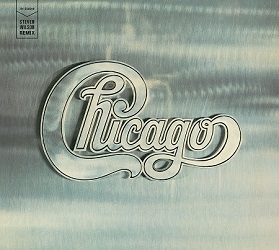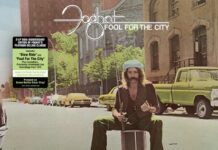Chicago’s sophomore effort would prove to be their most innovative, musically sound and political effort before they fell victim to the powder puff insurgency that overtook bands like themselves, the Beach Boys and a slew of others. Actually, the band managed to release some great records throughout the 70s, but their course of action changed drastically — from experimental jazz-rock to soft schlock ballads that divided the members and ultimately contributed to a decline in their creativity. In some ways, Chicago II caved to compromise when the group’s compositions were shortened to suit radio programmers. But like their first and several subsequent albums, they had two LPs to spread it around on.
As commercial as it appeared to be, Chicago II was a solid accomplishment that verified the band’s instrumental and songwriting skills. “Make Me Smile” and “25 Or 6 To 4” were hits as well as testaments to the band’s relentless strength as a powerful, unswerving combination. With the triple threat horn section of Walter Parazaider, James Pankow and Lee Loughnane leading the way — guitarist Terry Kath, bassist Peter Cetera, keyboardist Robert Lamm and drummer Daniel Seraphine proficiently delivered a soulful and rocking assault. Vocally, the band was well balanced by Kath’s throaty, soulful voice, Lamm’s smooth and grounded mid-range, and Cetera’s finely strung tenor. The Beach Boys, Eagles or CSN would be hard pressed to be as harmonically precise on something like “So Much To Say, So Much To Give” or “Fancy Colors.”
While the album’s centerpiece, “Ballet For A Girl In Buchannon,” was put on the chopping block for the hit parade (inadvertently producing the “Make Me Smile” single), the integrity and spirit of Chicago is preserved. It wouldn’t be until the record-buying public became dependent on Chicago’s slower-paced, more blatantly accessible material that the band started to morph into a pop phenomenon. When Kath accidentally killed himself in 1978, Chicago turned into a disparate animal that continued to move millions of units. The onslaught of the times and the change in personnel more or less killed the artistic merit that once clung so dangerously to the edge. Even though Chicago is dedicated “to the people of the revolution…And the revolution in all of its forms,” the revolution ended years ago for the members of Chicago.
Now, more than 40 years after its release, Chicago II has been restored with a new stereo mix by ace musician and producer Steven Wilson. Drawn from the original 16-track multi-track tapes, and working with high-resolution 96K/24 bit digitally transferred files, Wilson was able to extract every nuance, enhancing and refining the record’s sound to new heights of clarity, definition and sonic power. Although he’s primarily known for taking classic progressive rock records by Yes, Jethro Tull and Gentle Giant and turning them into 5.1 surround sound ear candy, Wilson says Chicago II is a “pre-eminent masterpiece.” When you add this album and a 2016 induction into the Rock and Roll Hall of Fame to the list of career milestones, Chicago’s place as one of the pioneers of jazz-rock is more or less set in stone.
~ Shawn Perry




















